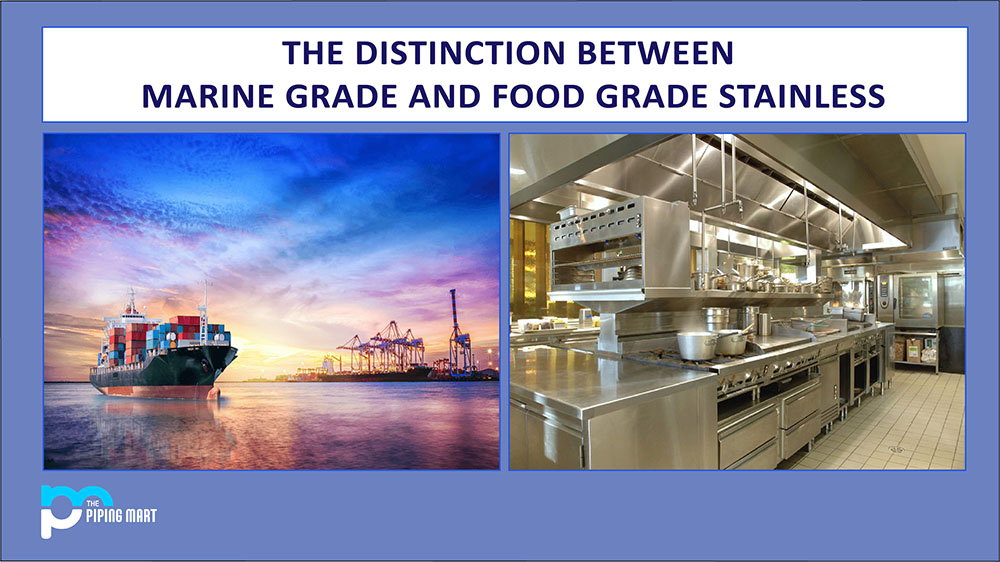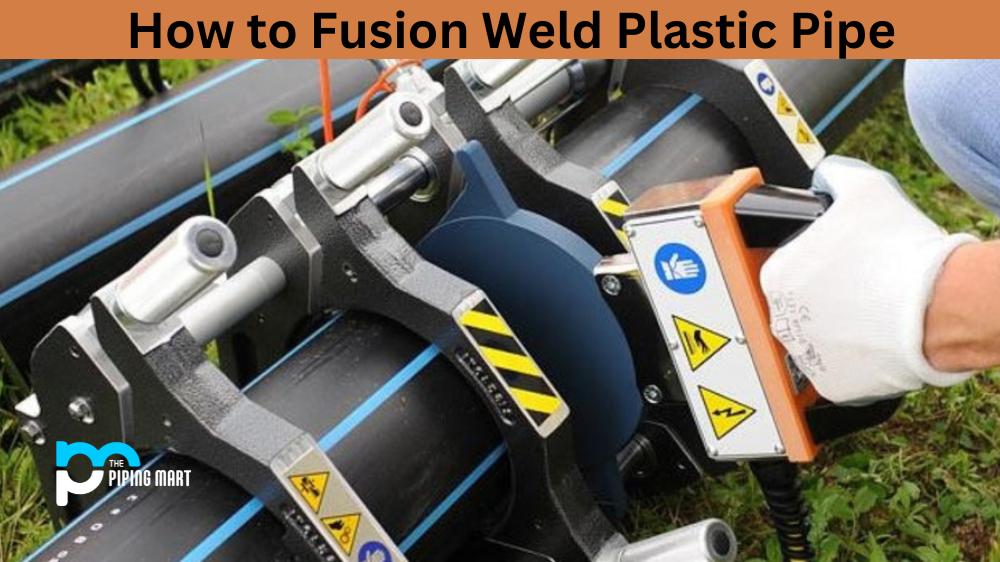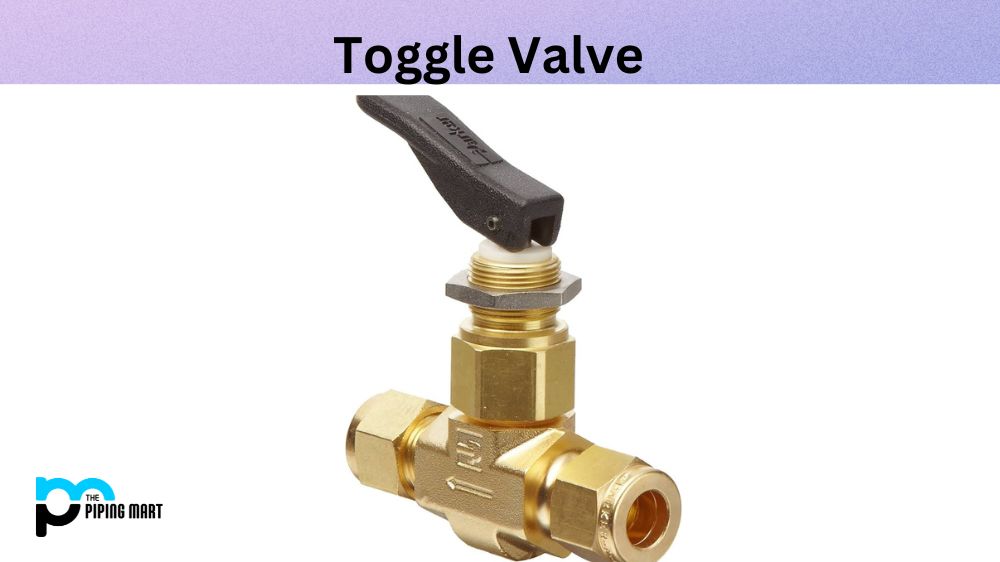From fundamental requirements to more complex daily needs, stainless steel has become an essential component of the production industry. The fact that stainless steel is an alloy that may meet any industry’s requirements for mechanical qualities, corrosion resistance, or cost makes it a suitable material.
Before making a long-term commitment to stainless steel equipment, numerous aspects, such as the differences between the food and maritime industries, must be considered. The number of processing facilities, the type of food or liquid, the chemicals that are added to or present in food, and the temperature at which the food is heated or cooled are just a few of the items that spring to mind when thinking about the food and beverage sector. The fundamental needs for the food and beverage business would be corrosion resistance, cleaning ease, durability, and cost.
Different manufacturers create or process sauces, liquids, milk, jams, etc., daily with varying pH levels. Long-term contact with equipment could cause cross-contamination and product spoilage, resulting in a significant loss. Additionally, the processing equipment’s surface needs to be smooth and damage-free to facilitate easy product flow. The best options are three stainless steel grades 304, alloy 316, and grade 430. Grade 430 is the cheapest of the three grades, whereas alloy 316 is the most expensive. However, because they are non-toxic and don’t interact with the chemicals found in food, grades 304 and 316 are frequently used to make sanitary items.
Significant distinction comprises of:
- Compared to food-grade stainless steel, marine-grade stainless is more robust and long-lasting. This stainless will not corrode, rust, or get a surface patina. It might be challenging to locate and needs a consistent shape.
- Food-grade stainless steel is more accessible and has a consistent shape. Marine-grade stainless steel is often used for outdoor furniture, table legs, boats, and ships.
- Stainless steel with a minimum purity of 99.9% is known as marine-grade stainless steel. This indicates that no other metals have been added to the steel to produce a different grade.
- Stainless steel intended for use in food does not need to be as pure and may contain alloys or other metals to enhance specific qualities.
- Stainless steel designed for marine use is resistant to corrosion and saltwater deterioration. Although food-grade stainless steel must tolerate food acids, it cannot withstand the same circumstances.
- Typically, marine-grade stainless steel costs more than food-grade stainless steel. Marine grade differs from industrial grade in that it contains more chromium. The chromium serves as a corrosion and rust inhibitor. Additionally, thicker than food-grade stainless steel, marine-grade stainless steel has a longer lifespan. Food-grade stainless steel can be used in the marine environment but not for cooking.
- A different alloy with a higher concentration of chromium and nickel shields it against corrosion and is used to create marine-grade stainless steel.
What applications do these stainless steel grades have in the kitchen?
Although marine-grade stainless steel is not the same as food-grade, it is used in kitchen appliances. The marine-grade stainless steel has a greater level of chromium for rust prevention, which is the initial distinction between these two grades of stainless steel.
The sort of metal one wants in the home kitchen is food-grade stainless steel because it is strong and can handle various culinary duties. The marine grade is thicker and more costly than the food grade, which is the second distinction. In saltwater situations, such as on boats and yachts, marine-grade stainless steel is frequently utilized. It shouldn’t be used to cook food since it will rust and corrode if it comes into contact with water.
What benefits can be expected from each kind of stainless steel?
A5/A10 stainless steel, often known as marine-grade stainless steel, is more abrasion and seawater-resistant. Due to its high reactivity with acidic foods, there are better choices for use in food preparation. The variant of this metal that is more adaptable is food-grade stainless steel. It can survive high heat and scratches but not acid or salt-related corrosion. Stainless steel that is intended for food is often used for cookware. Although it isn’t as durable as marine grade, the metal’s quality is less critical since it isn’t submerged in salt water. A type of metal that is resistant to oxidation and corrosion is stainless steel.
Marine-grade and food-grade stainless steel are the two varieties. Austenitic stainless steel, commonly referred to as marine grades stainless steel, is produced with chromium and nickel to help it resist corrosion. It can survive dampness and salinity while being robust since it is often thicker than other stainless steel forms. Compared to marine-grade stainless steel, food-grade stainless steel has a more complex surface and doesn’t contain nickel, which helps to decrease allergic reactions.
What are the drawbacks of each kind of stainless steel?
From cookware to jewelry, stainless steel is a material that is utilized in a variety of items. There are certain drawbacks to this adaptable metal, though Food-grade stainless steel may have certain carcinogenic qualities, while marine-grade stainless steel is pricier and less resilient than standard stainless steel. Stainless steel is available in many different grades. The distinction between marine-grade and food-grade stainless steel is crucial to understand. While not as robust, food-grade stainless steel is suitable for acidic foods. However, because it will react with acidic foods, marine-grade stainless steel cannot be used with them.
What is Food Industry Stainless Steel?
The 20th century’s discovery of stainless steel is still creating waves in the food and beverage sectors regarding hygiene and toughness. Stainless steel has demonstrated its suitability as a food-safe material for over a century. After all, it doesn’t rust, corrode, or provide a living environment for dangerous microorganisms.
The type of stainless steel most frequently used in the food and beverage industry is 304. The corrosion and oxidation resistance of 304 stainless steel. Its high nickel concentration is responsible for its corrosion resistance, while its high chromium content keeps it from rusting. 304 stainless steel is widely available in industrial kitchens and food processing facilities.
Because of their innate resistance to corrosion, stainless steel is frequently employed in the food sector. It can be molded into intricate shapes. Stainless steel can be sterilized and cleaned without losing its quality. It is also perfect for the food business because it does not give food color or flavor.
Due to its superior corrosion resistance in various food and beverage media, most stainless steel used in food applications includes chromium in the range of 16 to 18%. Manufacturing of cutlery, hollow-ware and culinary utensils uses austenitic grades. Other uses include milk tankers and brewing vessels. Corrosive food and beverage products are transported and stored using high alloy austenitic grades. Molybdenum-containing grades are particularly resistant to foods that contain salt. Due to its wide range of applications in the food sector, 316L/1.4404 is known as “food grade.” Similarly, 304L/1.4307 is a grade widely used in applications for the food sector.
Being magnetic is a unique property of ferritic stainless steel. It is employed in producing home appliances (dishwashers, refrigerators, and even ovens). The grade 430/1.4016 offers adequate corrosion protection for a few applications without high corrosion resistance. This grade’s cost is another perk. 1.4016 is a cost-effective option because it costs much less than austenitic grades. They have exceptional resistance to Stress Corrosion Cracking and perform exceptionally well in highly oxidizing situations (such as nitric acid). However, the utilization is constrained by poor formability and weldability.
Carbon is abundant in martensitic grades. Heat treatment can be used to harden this kind of stainless steel. The grade is utilized when a high level of wear resistance is required. The grade 420/1.4021 is frequently used to make knife blades. Grade 1.4116 knives are exceptional and maintain their sharpness even after extended use.
Due to their superior resistance to corrosion brought on by salty solutions at high temperatures, duplex grades are chosen for handling corrosive foodstuffs. Duplex grades provide better stress corrosion cracking, crevice, and pitting resistance than austenitic grades. Applications include cheese dairies, custard and vinegar production, sauce production, and fish canning facilities.
Most demanded grade in food processing industries: Due to its extremely low price, grade 430 is preferred by many enterprises involved in food processing. Grade 430 is an alloy that costs less because it has a small proportion of nickel. Additionally, this alloy shows excellent resistance to oxidation and nitric and organic acids. As a result, grade 430 can be utilized as an alloy for a long time in slightly acidic environments. In contrast, grade 304, which is more expensive than the earlier grade, is a very common alloy in various sectors outside the food business. Grade 304 is frequently regarded as a model alloy for processing food categories such as meats, milk, fruits, and vegetables. This is due to the alloy’s ability to reduce pollution by removing toxicity and its durability and ease of cleaning. Not to add that, by many criteria, alloy 304 is a cheaper choice in many industries because of its durability and outstanding corrosion resistance in food and beverage. In contrast, grade 316 is the most expensive of the three and is second in popularity only to grade 304. Although the alloy has substantially stronger mechanical and corrosion resistance than grade 304, it is only utilized when suppliers require these qualities at much higher levels.
What is Marine Grade Stainless Steel?
The second-most fundamental type of stainless steel, 316, is also known as marine-grade stainless steel. The proximity of a synthetic element called molybdenum, which provides better corrosion resistance, particularly to salt, makes it the most notable distinction between marine-grade stainless steel and regular stainless steel. These marine stainless steel grades are ideal for building on the water, providing more vital, robust structures. These days, marine-grade materials are preferred by builders while making underwater.
Because molybdenum is considered in their composition, 316 or 316L are the generally used grades for this application, even though there is no industry standard for marine-grade stainless steel. Maritime Grade Stainless Steel is widely regarded as the ideal metal to use in both marine and medical applications because of its chromium-nickel steel composition and the addition of molybdenum. Although some different grades of stainless steel contain molybdenum, the comparatively high concentration of 2.0–2.5% present in 316 prevents seawater from causing pitting or cleft consumption. As a result, these grades are more expensive than others, such as 304. The stainless steel with the most extended life cycle is grade 316.
Additionally, marine-grade 316 is far more resistant to mixtures of sulfuric acid, bromides, iodides, chlorides, and unsaturated fats. In mechanical applications, such as chemical processing, it is typically used. Due to its non-receptive qualities, it is also utilized in manufacturing medications and the careful assembly of medical devices where excessive metallic contamination must be avoided.
Stainless steel is the best product to utilize for aquatic activities indoors. The best choice in any situation when water is gushing all around each piece of metal is marine-grade stainless steel. A significant amount of time is planned for several activities, some of which could be submerged in water. Stainless steel won’t enter the water and begins to corrode for a very long time. The site’s analysis will demonstrate how dependable and toughened stainless steel is. The environment around marine tasks can be highly harsh, including saltwater and constant sun. For maritime occupations, a composite determination is crucial. 316/L and duplex are the most well-known grades for these applications. These composite materials are sufficiently stable to sustain noticeably greater discipline than the typical carbon alloy since they have higher corrosion resistance and more top yield strengths.
An austenitic chromium-nickel stainless steel with between two and three percent molybdenum is known as type 316, marine-grade stainless steel. Molybdenum protects against pitting in chloride particle arrangements, has corrosion resistance, and excellent construction at high temperatures.
In acidic environments, stainless steel of type 316 grade performs very well. This grade of steel helps protect against erosion caused by corrosive sulfates, basic chlorides, and acetic, formic, hydrochloric, and tartaric acids.
Type 316 stainless steel is a set of stainless steel alloys that includes types 301-304, all the grades, and 316 and 347. The austenitic stainless steels in the 316 families have more excellent corrosion resistance than 304 stainless steel. Due to its lower carbon concentration than 301 to 303 arrangement compounds, which lead to carbide precipitation in welding applications, this alloy is suitable for welding.
Molybdenum expansion and somewhat more excellent nickel content in 316 Stainless Steel make it suitable for compositional applications in harsh environments, such as contaminated marine environments and areas with subzero temperatures.
316 Marine grade stainless steel comparison with different grades: However, regarding marine-quality stainless steel, grade 316 is thought to be the most popular. While grade 316 is appropriate for onshore or marine applications, it can fall short in pitting resistance, especially compared to several other alloys. For instance, grade 316 has a PREN value of 25, Zeron 100 has a PREN value of 40, and SSC-6MO has a high PREN value of 48. Zeron 100 is distinguished by its strong resistance to stress-related corrosion cracking in halide-containing settings. Austenitic stainless steel grades like UNS S32750, which have a high yield strength of 570 MPa and function well down to -50°C, also have resistance to pitting. While conventionally used 300 series and standard duplex stainless steels often perform poorly in marine environments, super austenitic stainless steel grades 6 Mo and SSC-6MO, with their enhanced molybdenum content, frequently outperform them while maintaining their impressive corrosion resistance and mechanical properties. Despite this, the marine and food industries are both demanding fields that depend on robust stainless steel for long-term performance. Therefore, to get the most out of the alloy, many clients must determine the application’s needs and the product being created.
Stainless Steel Fabrication:
The most accessible surfaces to clean are clear, smooth, and devoid of crevices. The buildup of substances on uneven surfaces may prevent bacteria and other microbes from being destroyed or eliminated by applying heat or chemicals. The prevention of scratches and dents should be considered when designing and installing stainless steel equipment. In general, it’s best to avoid sharp curves and corners, especially for internal cavities, because they can lead to buildups and stress cracking. Fully enclosed round or square tubing with unbroken welds works better for structural elements than angle or channel pieces, which feature difficult-to-clean sharp edges or dead spots.
Defending surfaces made of stainless steel:
Water, steam, mechanical scrubbing, abrasive materials, and chemical agents are frequently used in industrial cleaning. The surfaces of equipment need to be resilient enough to resist deformation. Knowing what products can degrade surface quality is also crucial. Stainless steels are far more resistant to mechanical abrasion than softer materials like aluminum. Additionally, they work well with a variety of disinfectants and cleaners. Hypochlorites, such as bleach, can harm passivation. Hence they should be avoided from coming into contact with stainless steel surfaces or carefully washed away. For disinfection, nitric acid, iodine, and ammonium solutions are often safer.
Stainless steel shouldn’t be attached to metals that aren’t stainless steel when manufacturing. Spot corrosion can occur in stainless steel due to contamination from carbon steel. Exposure to even small amounts of dust from nearby grinding or welding will cause contamination and rust. Due to galvanic reactions, surface deterioration can also result from prolonged contact with other metals, such as aluminum.

Pipingmart is B2B portal specializes in industrial, metal and piping products. Also, share latest information and news related to products, materials and different types grades to help business dealing in this industry.




